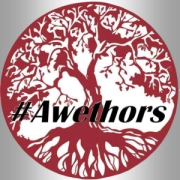(Below is a revised re-post from January 27 and February 7, 2010.)
‘You are early to-night, my friend.’ The man stammered in reply: —
‘The English Herr was in a hurry,’ to which the stranger replied: —
‘That is why, I suppose, you wished him to go on to Bukovina. You cannot deceive me, my friend; I know too much, and my horses are swift.’ As he spoke he smiled, the lamplight fell on a hard-looking mouth, with very red lips and sharp-looking teeth, as white as ivory. One of my companions whispered to another the line from Burger’s ‘Lenore’: —
‘Denn die Todten reiten schnell.’ —
(‘For the dead travel fast.’)
I picked up a copy of Bram Stoker’s classic novel after I finished NaNoWriMo 2009 (during which I worked more on what’s probably my darkest effort to date), and re-acquainted myself with one of the foundational vampire tales. Dracula is far removed from the modern re-imaginings of the mythology — and, strange as this may seem, it was refreshing.
Anybody else tired of hearing about Bella and Edward and whoever else they hang with? Anybody else look with a canted eye at Buffy and Angel?
But the suckers — ahem — critters have populated frightening tales for centuries, and I don’t expect them to leave anytime soon.
On occasion, I participate in the CSFF Blog Tour, which has featured modern vampire novels: Shade by John Olson, and Haunt of Jackals by Eric Wilson. (My blog posts about each can be found here: Shade 1, 2, 3 and Jackals 1, 2, 3.) Both books are in series, and are different takes on the mythology. Shade presents more of a “psychic vampire” image without the traditional blood-letting, but Jackals is much more graphic and offers a twist on the ability of vampires to shape-shift.
I read those books, sampled some television series (those mentioned above, also Forever Knight and Moonlight), listened to teenagers — and even adults — rave about the Twilight books and films, and experienced the strange sensation of being lost, of being pressed under the weight of all those versions and the various leaps (or chasms) in logic that made me unable to suspend disbelief for long, if at all.
 So I went back to what many might consider source material: Bram Stoker‘s Dracula. He was not the first to cover this ancient ground (other well-known stories include Polidori‘s The Vampyre, and Le Fanu‘s Carmilla), but he is very likely the most well-known and most-referenced author of vampire fiction. The copy I chose is the Simon & Schuster Enriched Classics edition, with notes and commentary by Joseph Valente, a Professor of English.
So I went back to what many might consider source material: Bram Stoker‘s Dracula. He was not the first to cover this ancient ground (other well-known stories include Polidori‘s The Vampyre, and Le Fanu‘s Carmilla), but he is very likely the most well-known and most-referenced author of vampire fiction. The copy I chose is the Simon & Schuster Enriched Classics edition, with notes and commentary by Joseph Valente, a Professor of English.
[Though I enjoy books in which such additional information helps provide historical, social, political, or religious context, or discusses why something may have been important or overlooked by characters in the book, and so on, I sometimes wonder how much of the commentary is really just the commentator’s twisting of the text to fit an opinion, and how much is straight-forward observation of the material.]
Vampires and sex, an age-old coupling. The reasons are obvious: attacks that happen at night, usually on victims who are of the opposite gender to the vampires doing the attacking, and (in Dracula the novel) after the victims are in bed. And there’s the whole neck-biting schtick—which, as we all know, is more than a flirty little nibble.
There’s a lot of writing out there concerning vampirism and Victorian views of sexuality, and there’s a realm of scholarship that sees Dracula the character as freeing women sexually while Van Helsing, et al, try to suppress them. And, though the women seek help from their friends and send up prayers to God, they are drawn to the immortal count because their subconscious supposedly really, really wants him.
While such arguments might be made, there’s not much in the novel itself to support them. Yeah, vampires may work their mojo, but they’re presented as evil, and not all that sexy. Sensual, maybe, but not freeing. They’re rapists—even the females. After all, rape isn’t about sex or mutual expression or love. It’s about power and control.
Dracula controls Lucy. He controls Mina. Neither woman wants what he’s offering, and the men do what they can to stop him. Sure, they make some bonehead mistakes, like leaving Mina alone while they scout the count’s London digs, but I never get the impression they are trying to suppress either woman. In fact, Mina and Jonathan seem quite happy with their marriage. Until Dracula gets involved, of course.
—to be continued—
UPDATE: Last year, I read John Whalen’s excellent Western twist on vampires, Vampire Siege at Rio Muerto. You can read my review of his well-received novel here.











Jeff Chapman
October 22, 2014 at 12:56 pm
Interesting commentary on vampire literature. I agree. They’re supposed to be evil. It’s like an alternate path to immortality but with a horrible cost. Carmilla is among my favorite stories. I consider books like Twilight attempts to de-fang vampires. That story I wrote–“The Princess and the Vampire,” about what happens when you literally de-fang a vampire–is my answer.
Keanan
October 22, 2014 at 9:46 pm
Jeff, send me a link to that story, just in case readers of this blog want to buy a copy. I can include it in one of the remaining posts about Dracula.